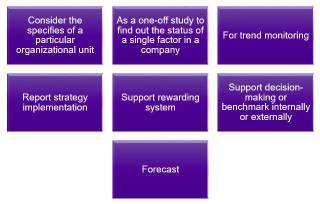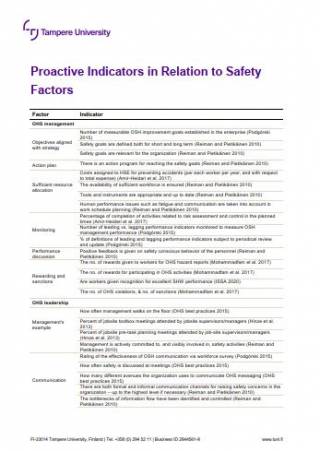Description:
The listing provides examples of proactive leading, qualitative indicators identified in the literature.
How to apply:
The idea IS to offer organizations new measures for
- measuring safety performance in particular from a proactive point of view
- filling in the gaps identified in measuring the different factors contributing to the formation of safety performance
The idea IS NOT to provide a comprehensive listing of what kind of measures companies should have in their measurement system. Application of the measures need to be done in alignment with company-specific purposes and needs.
Examples of uses of the listing:

NOTE: The implementation of the proposed indicators requires careful consideration of
-
- Precise name of the indicator
- Target level of performance
- Time required to achieve the target
- Measurement frequency
- Data source
- The exact formula of how the measurement result is calculated
Background:
Organizations still tend to use a lot of traditional lagging indicators, which focus mainly on measuring the result, i.e., the level of safety. In contrast, companies have little access to leading qualitative indicators to examine the upstream of the chain and “softer” factors contributing to safety.
The listing of proactive indicators collected from the academic literature has been made to supplement the safety performance map.
More on Haapavirta, R. (2020). Designing a map for analyzing and measuring safety performance. Master of Science Thesis, Tampere University.
Download the material as PDF file here

Download the Proactive Indicators in Relation to Safety Factors
Download the Proactive Indicators in Relation to Safety Factors (IN FINNISH)
